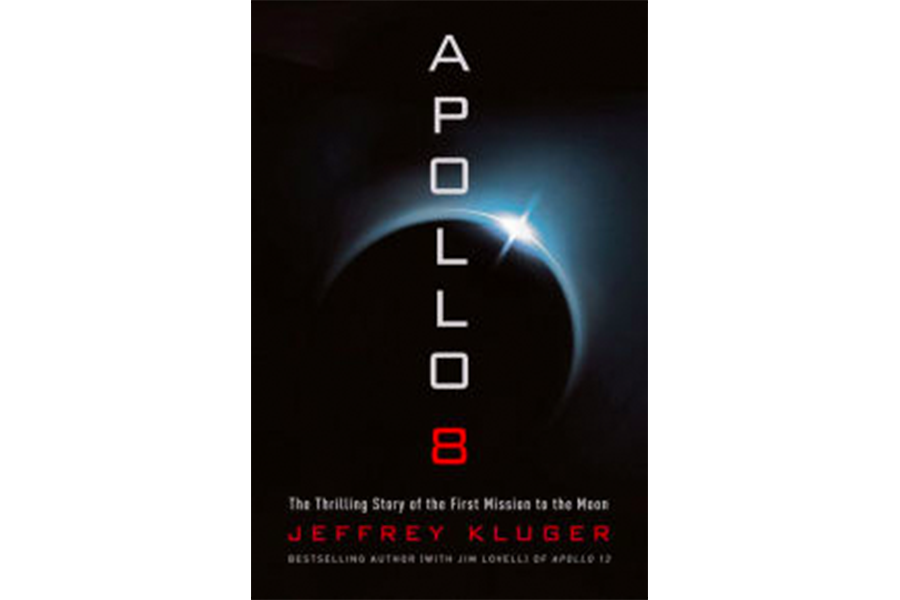'Apollo 8' ably resurrects the thrill and drama of the 1960s space race
It is easy to forget how intense the space race was in the 1960s and how infatuated Americans were with all things extraterrestrial. The US beat the Russians and landed on the moon – hip, hip hurrah – but then the nation seemed to have a collective Peggy Lee moment, musing: “Is that all there is to space?”
Most people know what Neil Armstrong did, but how many can ace this contemporary cosmic quiz: Are there human beings in space right now? If so, how many? Finally, are there any Americans up yonder?
The 1960s may not have been the great old days exactly – what with the Vietnam War, political assassinations, civil rights abuses, and urban riots—but the decade was without question the golden age of space exploration.
In his latest book (he co-authored "Apollo 13," among others) Jeffrey Kluger again harkens back to those thrilling days of yesteryear when square-jawed Americans braved the unknown and took giant steps for mankind (not simply for America). In Apollo 8: The Thrilling Story of the First Mission to the Moon, Kluger ably resurrects the drama of half a century ago in all its ramifications, not just the thrill of victory but also the agony of defeat. By 1968, eight American astronauts already had died in various accidents, and more, of course, would die later.
To refresh memories, Apollo 8’s December 1968 flight preceded Armstrong’s Apollo 11 mission by seven months. The crew – Frank Borman, Jim Lovell and Bill Anders – did not set foot on the moon, but rather orbited it 10 times. They were the first humans to fall under the gravitational embrace of a foreign celestial body and to view the so-called “dark side” of the moon.
A longtime science writer and editor for Time magazine, Kluger spins an engaging tale even when it delves into the nooks and crannies of physics, space politics, and human dynamics. His telling is straightforward; he doesn’t wander from the facts. If he was tempted to pontificate on what 1968 has to do with 2017 and beyond, he resists it. He doesn’t address the Peggy Lee question directly. Perhaps he feels that facts suffice.
Here is a sampling of the compelling moon metrics Kluger proffers. When the Apollo 8 trio hosted a live TV show from deep space, one billion viewers, or nearly one-third of all the people on the planet, tuned in. Previously, the farthest humankind had gotten away from Mother Earth was 850 miles. Commander Borman and company travelled 233,707 miles to reach the moon. To do that, their ship had to obtain a record speed of nearly 25,000 miles per hour, and upon reentering earth’s atmosphere, its leading edge would heat up to an unprecedented 5,000 degrees.
Small wonder that before liftoff, Susan Borman would ask Chris Kraft, NASA’s director of flight operations, what her husband’s chances were of making it home. When he was satisfied that she really wanted an answer, he replied, “Okay, how’s fifty-fifty?” American soldiers at Gettysburg or on the beaches of Normandy had far better odds.
Any number of things could go wrong, and a few did. Borman got violently ill right away, and it wasn’t clear whether he had a virus that could incapacitate all three astronauts; radiation poisoning from passing through the Van Allen belts; or, best case scenario, simple motion sickness. There was talk of scrubbing the mission and returning home early. Needless to say, whatever the cause, gastrointestinal distress in a small, open and weightless capsule does not a pretty picture make.
At other times, Kluger paints a more lyrical tableau of space travel, for example: “The astronauts had seen the Earth and they had seen the moon, but this was the first time they were seeing them together – the ugly, broken world beneath them and the lovely, breakable one in front of them.” “Earthrise,” Bill Anders’ photo of this seminal moment, showing our planet emerging above the moon’s horizon, is among the most iconic images of all time.
When Frank Borman addressed Congress shortly after the mission, he expressed his belief that one day there would be small colonies of scientists living and working on the moon. “I’m convinced it is no longer whether we’ll do these things,” he said, “it’s a question of how long it will take and how much we’ll spend.” It remains an open question.
With the recent death of John Glenn, Frank Borman, 89, became the oldest living American astronaut. At the time of Kluger’s writing, Borman was 88 and still flying his own plane in the big skies of Montana, for fun and also to spot forest fires.






